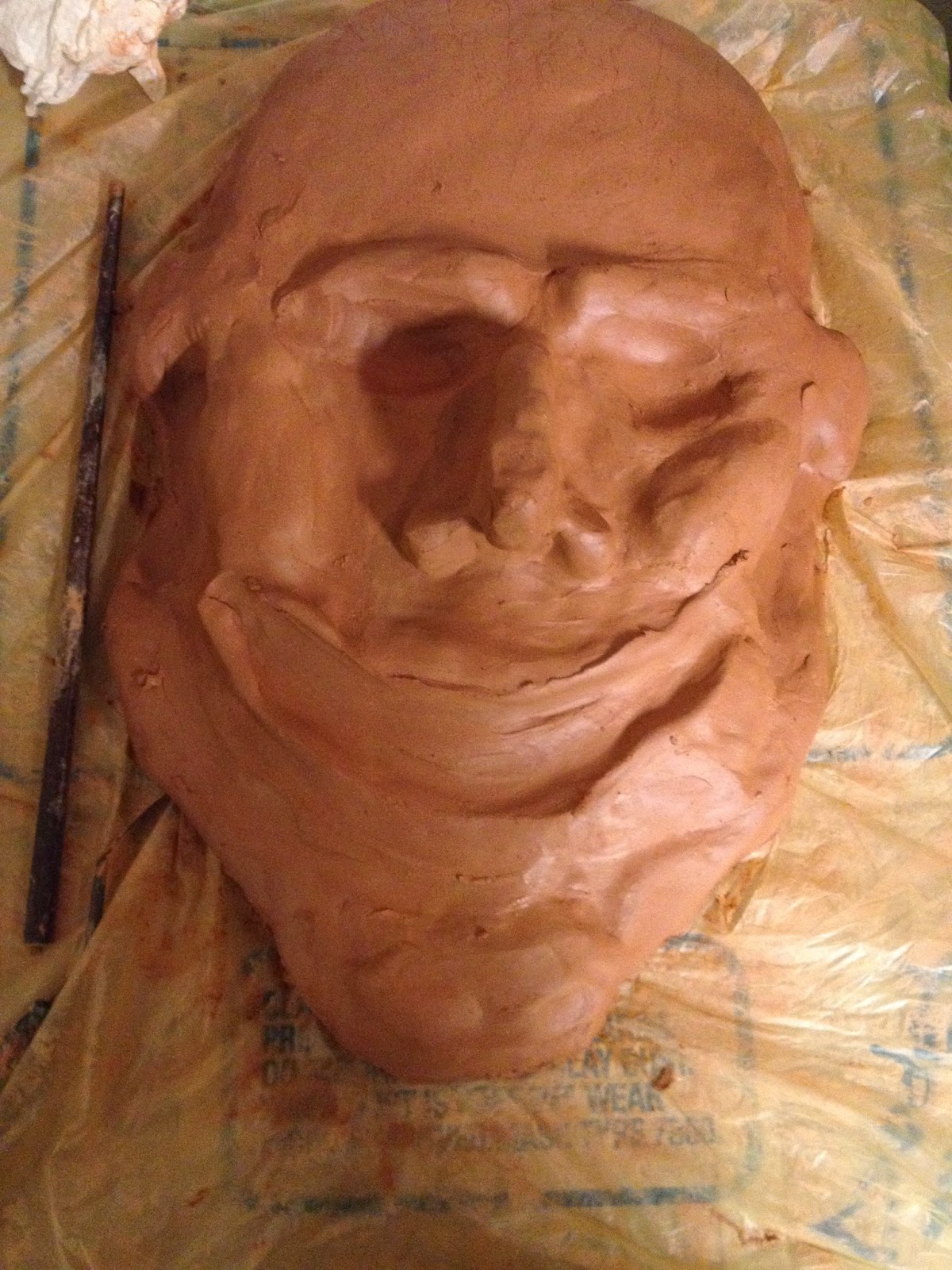The
picture above shows how my mask is progressing. When I had first started with my
original design, while still retaining a bit of an aged appearance, it was
meant to look more uniform and smooth. I
had intended to give the mask a very symmetrical, straight nose. But as I had
begun sculpting the nose onto the slap, I found that a curved and somewhat
crooked bridge added character to the mask. Eventually, I had gone for a hooked
nose with uneven nostrils. This eventually led to the protruding brows and
curved cheekbones. The hollowed sides of the face had been a last minute add on,
seeing as I liked how it emphasized the roundness of the cheeks and the
sharpness of the temple. Other things that were not shown in the photo was how
I had made tentacle-like protrusions spreading out from the forehead and
wrapping around the head. At first, I was supposed to scrap that piece from my
original design. But after seeing how it could be advantageous to the various
media I could attach onto it, I had kept it. Tiny holes were made for the
future additions of plastic leaves or other media.
After the mask had been fired and cooled, painting and adding on the other media was the easy part. With the use of oil paint, I had painted the mask a deep aquamarine color, making sure to add on various swirls of color as well. The tiny holes that I had made to the forehead and eye sockets were then filled with marbles. Plastic leaves as well as various shiny beads were also glued onto the head.
Overall,
I found the project to be quite fun and a new experience. At first, I was
having a bit of a problem molding the clay together and working with water,
seeing as clumps of it would stick onto and in between my fingers. But
eventually I had come to adapt a certain rhythm. Working with subduction had
also been a bit difficult for me, seeing as I favor my left so much and would
often make a messy cut to the right. I found that creating a symmetry with the
mask sculpture was much more challenging than with two dimensional art as well.
This project has given me a better appreciation of the sculpting process and
structure of the face.










